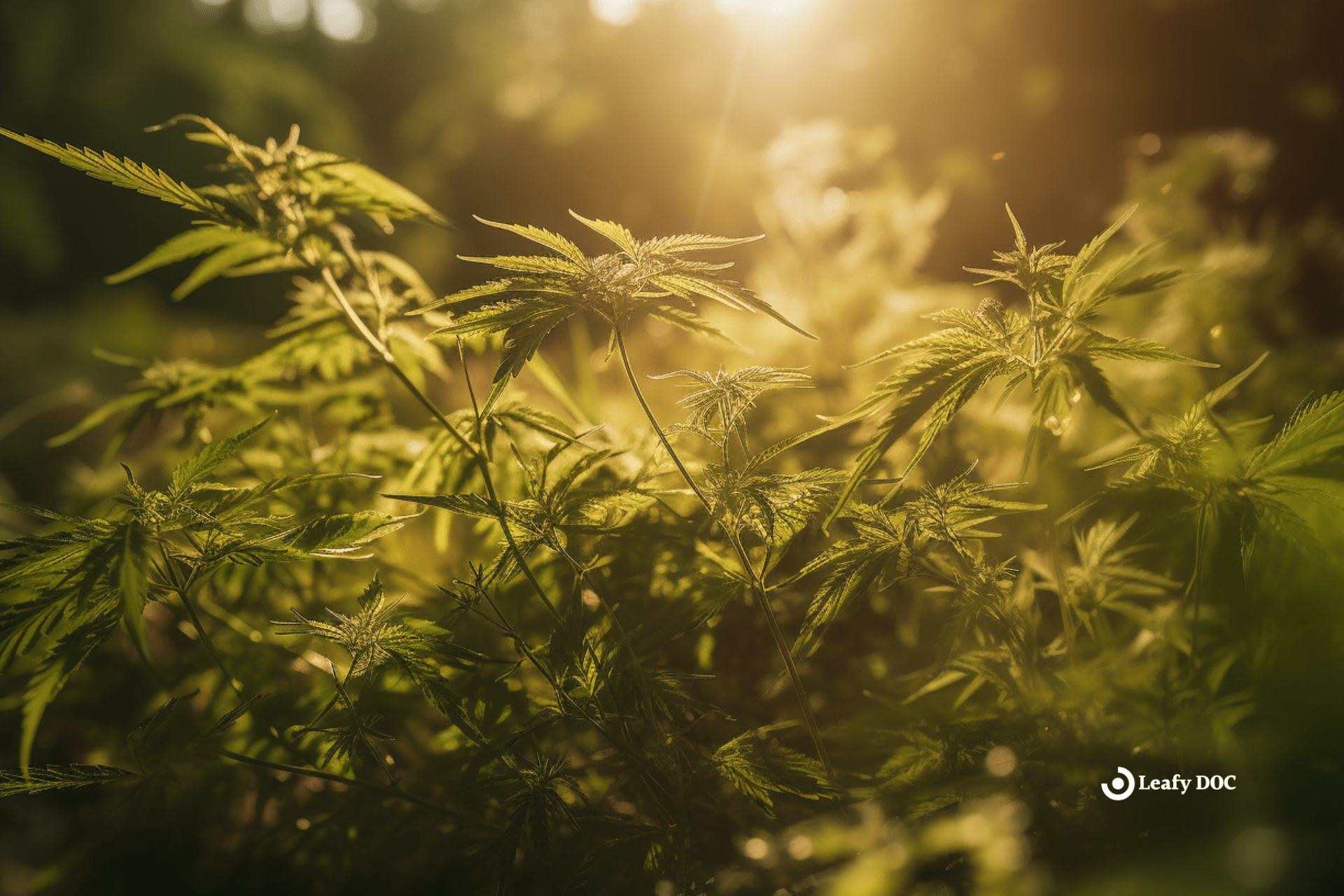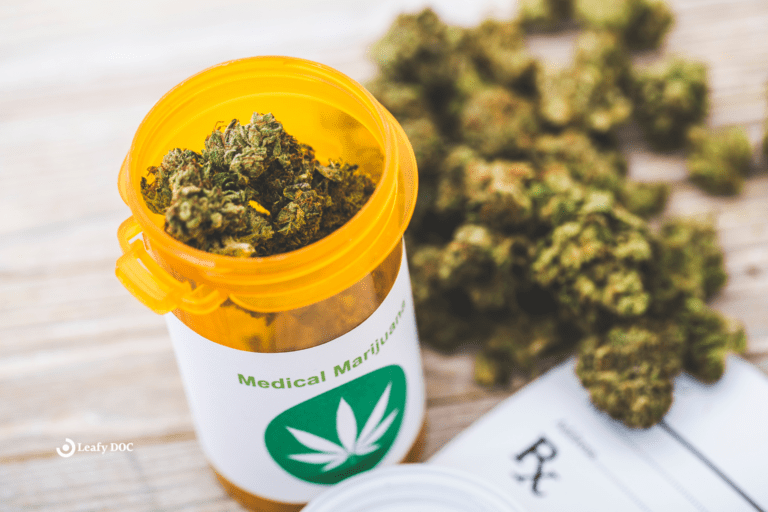What Is The Best Time Of Year To Grow Marijuana?
by Haley Mills · October 31, 2023
Unlock the Perfect Season for Growing Marijuana – Find Out the Best Time to Cultivate Your Own Cannabis! Don’t Miss this Exclusive Guide to Growing Top-Quality Marijuana Year-Round. Start Your Journey Today!

Are you interested in growing marijuana but unsure of the best time of year to start? Understanding the optimal growing conditions and seasonal considerations can significantly enhance your chances of a successful harvest. This article will provide you with a comprehensive guide on the best time of year to grow marijuana, taking into account the marijuana growth cycle, factors affecting growth, and the environmental conditions necessary for cultivation.
To embark on a successful marijuana cultivation journey, it is crucial to grasp the marijuana growth cycle. This cycle consists of four main stages: germination, vegetative growth, flowering, and harvesting. Each stage requires specific environmental conditions and care techniques to ensure the plants thrive. By familiarizing yourself with these stages, you can plan your growing time accordingly and maximize your yield.
In the following sections, we will explore the optimal environmental conditions for marijuana cultivation and provide insights into harvesting and yield maximization techniques. By the end of this article, you will have a comprehensive understanding of the best time of year to grow marijuana and the necessary steps to ensure a successful and bountiful harvest.
So, let’s get started on your journey to becoming a successful marijuana grower!
Understanding the Marijuana Growth Cycle
The growth cycle of marijuana plants can be divided into four main stages: germination, vegetative growth, flowering, and harvesting. Each stage has its own specific nutrient requirements and pest management strategies that must be considered.
During the germination stage, marijuana seeds require a moist and warm environment to sprout. It’s essential to provide them with adequate water and a temperature of around 70-85°F (21-29°C).
Once the seeds have sprouted and developed into seedlings, they enter the vegetative growth stage. This stage is characterized by rapid growth and leaf and stem development. Marijuana plants in the vegetative stage require higher levels of nitrogen, phosphorus, potassium, and other trace minerals. Providing them with a balanced nutrient solution will ensure healthy and vigorous growth.
As the plants transition into the flowering stage, their nutrient requirements change. They require less nitrogen and more phosphorus and potassium. This is the stage where the plants start producing buds containing the desired cannabinoids. To maximize bud development and potency, provide the plants with the right nutrients and adjust the pH of the soil or hydroponic solution accordingly.
Pest management is another crucial aspect of marijuana cultivation. Common pests affecting marijuana plants include aphids, spider mites, and whiteflies. These pests can cause damage to the plants and reduce their overall yield. Implementing pest management strategies such as regular inspections, using organic insecticides, and maintaining a clean growing environment can help prevent infestations and ensure the health of your plants.
Factors Affecting Marijuana Growth
To achieve optimal marijuana growth, you should consider various factors. One factor is the nutritional requirements for marijuana plants. Like any other plant, marijuana requires certain nutrients to grow and thrive. These include macronutrients such as nitrogen, phosphorus, potassium, and micronutrients like calcium, magnesium, and iron.
Be sure to provide the right balance of nutrients to ensure healthy and vigorous growth. This can be done through fertilizers specifically formulated for marijuana cultivation or through organic methods such as composting.
Another factor that affects marijuana growth is pest control strategies. Marijuana plants can be susceptible to various pests, including insects, mites, and fungi. These pests can cause damage to the plants, affecting their overall health and productivity.
To prevent and control pest infestations, growers often employ a combination of strategies. This may include regular inspection of plants for signs of pests, using natural predators or biological controls, and applying pesticides or fungicides when necessary. Implementing a proactive pest control plan is vital to protect the plants and ensure successful growth.
Optimal Environmental Conditions for Marijuana Cultivation
The ideal environmental conditions for cultivating marijuana are crucial for achieving successful growth and maximizing yield. When it comes to marijuana cultivation, growers can cultivate indoors or outdoors, each with its own pros and cons.
Indoor cultivation allows for complete control over the environment, which is advantageous for achieving optimal growth conditions. Growers can manipulate light, temperature, humidity, and air circulation to create the perfect environment for their plants. This level of control ensures consistent growth and reduces the risk of pests and diseases. Additionally, indoor cultivation allows for year-round growing, as growers aren’t dependent on the natural seasons.
Outdoor cultivation offers some distinct advantages. Natural sunlight provides a full spectrum of light that’s beneficial for marijuana growth. Outdoor cultivation also allows plants to grow to their full potential, with unrestricted space and access to fresh air. Furthermore, outdoor cultivation can be more cost-effective, as there’s no need for expensive equipment like grow lights or ventilation systems.
Whether growers choose indoor or outdoor cultivation, maintaining optimal climate conditions is essential for successful marijuana growth. This involves controlling factors such as temperature, humidity, and airflow. Temperature should be kept within a range of 70-85°F (21-29°C) during the day and slightly cooler at night. Humidity levels should be maintained between 40-60% during the vegetative stage and lowered to 30-40% during flowering. Good airflow is also crucial, as it helps prevent the buildup of heat and humidity, reducing the risk of mold and mildew.
Seasonal Considerations for Growing Marijuana
Outdoor cultivation has its advantages, such as natural sunlight, larger plant size, and potentially higher yields. However, it also comes with some drawbacks, including lack of control over environmental conditions and the risk of pests and diseases.
Indoor cultivation allows for complete control over the growing environment, including temperature, humidity, and lighting. This can lead to more consistent and predictable results, but it requires a significant investment in equipment and energy consumption.
Some strains are better suited for warmer climates, while others thrive in colder temperatures. For example, Sativa strains tend to prefer warmer climates with longer growing seasons, as they have a longer flowering time. Indica strains, on the other hand, are more resilient to colder temperatures and have a shorter flowering time, making them better suited for shorter growing seasons. There are hybrid strains that combine the characteristics of both Sativa and Indica, offering a balance between the two.
By selecting the right strain for each season, you can maximize the potential of your marijuana plants and ensure a successful harvest.
Harvesting and Yield Maximization Techniques
One important aspect of yield maximization is nutrient management for marijuana cultivation. Marijuana plants require specific nutrients at different stages of growth, and providing the right balance of nutrients can significantly impact the final yield. Nutrient deficiencies or excesses can lead to stunted growth, reduced yield, and lower-quality buds. Therefore, monitoring and adjusting nutrient levels throughout the growing cycle is crucial.
To manage nutrients effectively, growers can use a combination of organic and synthetic fertilizers. Organic fertilizers provide slow-release nutrients and improve soil health, while synthetic fertilizers allow for precise control over nutrient ratios. Compost and other organic matter can also enhance soil structure and nutrient retention. Regular soil testing can help determine the nutrient levels and guide the application of fertilizers.
Another essential factor in yield maximization is pest control strategies. Pests such as insects, mites, and diseases can severely impact marijuana plants and reduce overall yield. Integrated Pest Management (IPM) techniques are commonly used to prevent and manage pests. This approach involves a combination of cultural, physical, and biological control methods, as well as the judicious use of pesticides.
Cultural control methods include crop rotation, proper sanitation, and optimal growing conditions. Physical control methods involve physically removing pests or using barriers to prevent their entry. Biological control methods utilize beneficial insects or organisms that prey on pests, reducing their populations naturally. When pesticides are necessary, choose products labeled explicitly for marijuana cultivation and follow all application instructions to ensure safety and effectiveness.
Frequently Asked Questions
What are some common challenges faced by marijuana growers and how can they be overcome?
Common challenges faced by marijuana growers include pests and diseases, as well as nutrient deficiencies. To overcome these challenges, proper pest management techniques and nutrient management strategies should be implemented to ensure healthy plant growth and maximum yields.
Are there any legal restrictions or regulations to be considered when growing marijuana?
Legalization impact on marijuana cultivation varies by jurisdiction. Licensing requirements are common, including background checks, fees, and specific cultivation guidelines. Compliance with local laws and regulations is crucial to avoid legal issues.
Can marijuana be grown indoors, and if so, what are the key factors to consider for successful indoor cultivation?
Marijuana can be successfully grown indoors by considering key factors such as choosing the right strain for indoor cultivation and implementing tips for maximizing yield. These factors are essential for a successful indoor cultivation process.
What common pests and diseases can affect marijuana plants, and how can they be prevented or treated?
Common pests affecting marijuana plants include aphids, spider mites, and fungus gnats. Organic pest control methods such as neem oil and ladybugs can be used. Effective treatments for common marijuana diseases include copper fungicides and sulfur-based sprays.
Are any specific nutrients or fertilizers recommended for optimal marijuana growth, and how should they be applied?
The pH balance is crucial for optimal marijuana growth as it affects nutrient absorption. Organic fertilizers are recommended for their natural composition and ability to improve soil quality. Synthetic fertilizers, although faster-acting, may have negative environmental impacts.
Last Updated: August 8, 2024
Get Approved for Your Medical Marijuana Card in Minutes!

Get Your Medical Card
Connect with a licensed physician online in minutes

Like This Article?
Share with your friends
Table of Contents
Keep Reading
-
North Dakota Medical Marijuanas: Steps to Access Treatment
Access North Dakota medical marijuanas through updated laws, qualifying conditions, and application steps.
-
Dispelling the Top 7 Myths About Medical Marijuana
Separate fact from fiction with our guide to the top 5 myths about medical marijuana. Learn the truth about cannabis and its potential benefits and drawbacks.
-
Should CBD Be A Part Of Your Wellness Routine?
Unlock the Power of CBD in Your Wellness Routine: Enhance Your Well-being Today! Discover the untapped potential of CBD and revolutionize your wellness routine. Click here to learn more.



